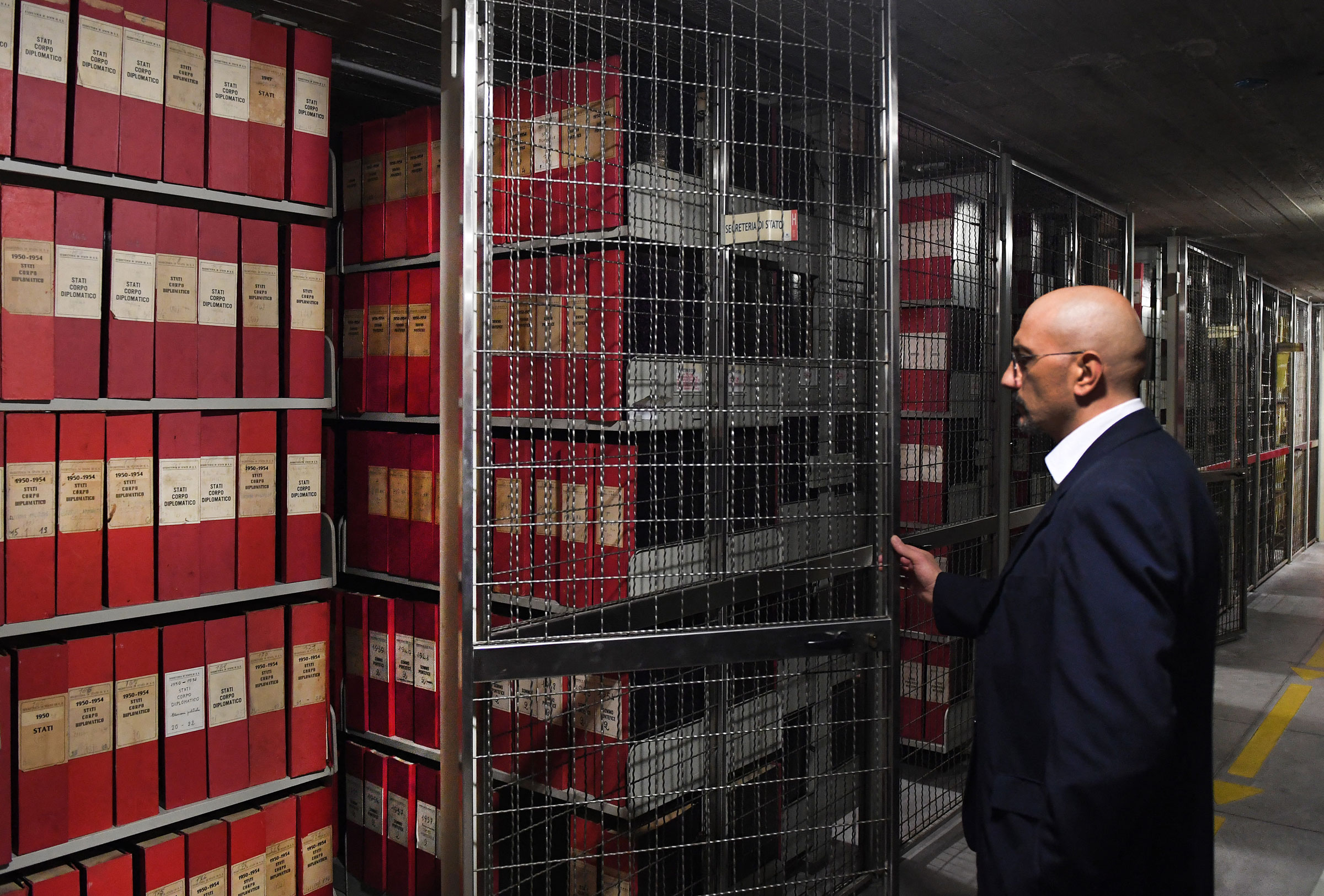
Recently unsealed documents from Vatican City archives in Rome shed new light on the Catholic Church’s action—and inaction—during the Holocaust. While researchers say it’s still too early to make any firm conclusions, they have made some surprising discoveries.
“This was one of the great mysteries, one of the last few critically important Holocaust related collections in the world that was not yet open,” Suzanne Brown-Fleming, who leads the Vatican Archives Initiative at the United States Holocaust Memorial Museum, tells TIME ahead of Holocaust Remembrance Day on April 18.
As part of the effort to survey the approximately 16 million never-before-seen files, unveiled in March 2020, researchers hope to find out more about what happened inside concentration camps and how the Holocaust was carried out, sifting through cables to find out what the church knew and when. Scholars have long known what decisions the church made, including taking a position of neutrality and impartiality as 6 million Jews and millions of others were killed, but hope recently unsealed archives will show why those decisions were made. The documents reveal a complicated mix of actions and views among European Catholics and church leadership; there was both silence and aid, support for Jews and their Nazi tormenters, antisemitism and empathy.
More from TIME
“The church is not afraid of history,” Pope Francis said in March 2019, when he announced that he was making accessible the records produced under Pope Pius XII, the Pope during the Holocaust. He acknowledged that Pope Pius XII’s legacy includes “moments of grave difficulties, tormented decisions of human and Christian prudence, that to some could appear as reticence.”

David Kertzer’s 2022 book The Pope at War explores this policy of neutrality and impartiality and the consequence of Pope Pius XII’s public silence on the mass killings of Jews. Kertzer’s review of newly unsealed files revealed that Pope Pius XII worked hard not to offend Adolf Hitler and Benito Mussolini and feared that publicly opposing Hitler would turn off German Catholics. Kertzer told the New York Times that he was “flabbergasted” to discover a German Nazi prince who acted as a go-between with Hitler and the Pope and that a top Vatican advisor wrote a letter to the Pope urging him not to protest an order to roundup Italy’s Jews and send them to concentration camps.
But while the Catholic Church’s top leadership shied away from publicly condemning the atrocities in Germany, the documents also provide information on the Catholics who hid thousands of Jews across Europe. Over 6,000 Jews were hidden in Rome and on Vatican property. There are hundreds of thousands of letters to the Pope from Jewish families begging for help. “The Vatican dealt mainly with distribution of economic relief and by helping [mostly baptized Jews] emigrate to North or South America,” according to Giovanni Coco, Staff Archivist in the Vatican Apostolic Archives.
In some ways, researchers have found more contradictions than clear answers. At the same time Catholic rescuers were helping Jews, some of those same people were also helping Nazis. The Catholic Church worked to win clemency for convicted Nazi war criminals after the war. “The justification given for aid to Nazi war criminals was Christian love and mercy,” says Brown-Fleming, whose research focuses on this effort. “I’m finding that the Holy See wanted to show gratitude for the protection of the city of Rome during the occupation of Rome under the Nazis in 1943. Some German generals later convicted in the Nuremberg Trials had helped to defend property and valuable art and tried to avoid damaging Vatican property and cultural treasures in Rome.”
Some of the documents also reveal widespread anti-semitism within the church. In 1944, Catholic leadership halted an attempt to host a dialogue between Christians and Jewish rabbis organized by a priest known as Father Marie-Benoît, who risked his life and saved hundreds of Jews. After the war, in the late 1940s, there were fears at the highest levels of church leadership that Jewish leaders did not have Catholic interests in mind and held huge sway in American military policy. “That was shocking to me,” says Brown-Fleming. “Six million Jews are murdered; they’re certainly not in a position to be taking over the American military presence in occupied Germany.” Overall, Brown-Fleming sees “a lot of fear” in the papers she’s read so far, fears of “a mythical threat that Jews and Judaism pose. It’s really strong and real.”
Whether the Catholic Church could have done more to prevent the atrocities of the Holocaust is not a question likely to be answered definitively from files. Hitler, as Brown Fleming puts it, “wasn’t going to be controlled by anything a Pope said or did. He was going to go forward with his genocidal program.” As Coco puts it: “We ask ourselves the question and it is not simple to answer. To do more is always possible, but in general we often realize it later. The new documents are helping us to find a way among the fog of our false myths or preconceptions.”
Scholars working with these recently unsealed files are expected to gather in Rome in October 2023 to discuss their findings together for the first time. But the effort has only just begun, and it could be another decade before the 16 million files are studied in their entirety. “We have all these contradictions, and it’s going to take a long time to work through them,” says Brown-Fleming. “We’re not going to find easy answers. I think we may come out of this [research] even more confused.”
More Must-Reads from TIME
- Cybersecurity Experts Are Sounding the Alarm on DOGE
- Meet the 2025 Women of the Year
- The Harsh Truth About Disability Inclusion
- Why Do More Young Adults Have Cancer?
- Colman Domingo Leads With Radical Love
- How to Get Better at Doing Things Alone
- Michelle Zauner Stares Down the Darkness
Write to Olivia B. Waxman at olivia.waxman@time.com